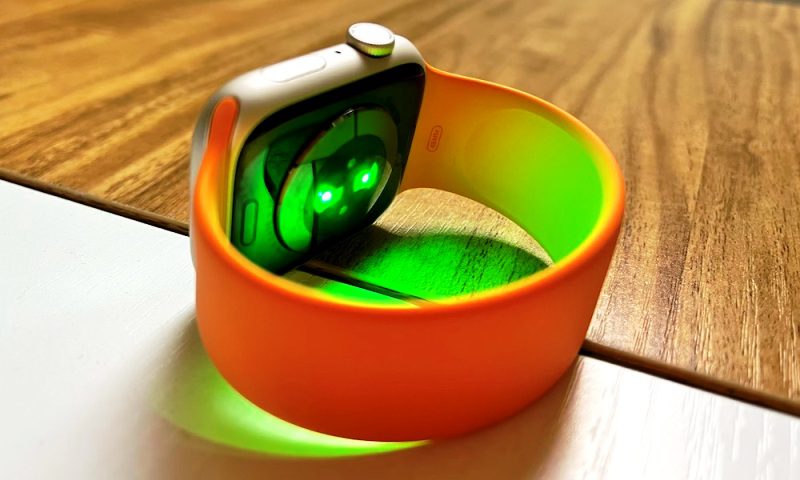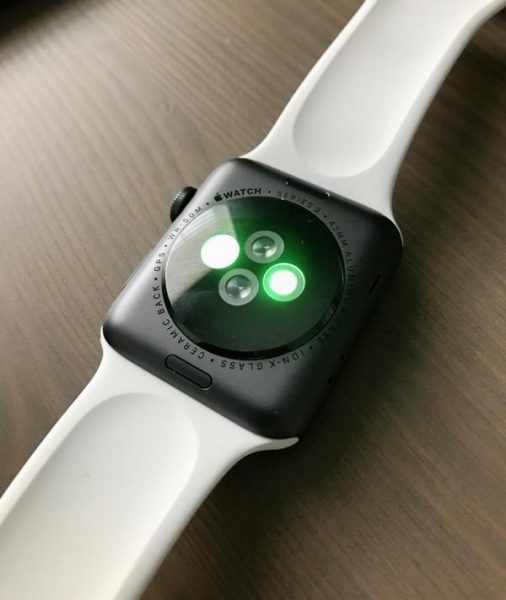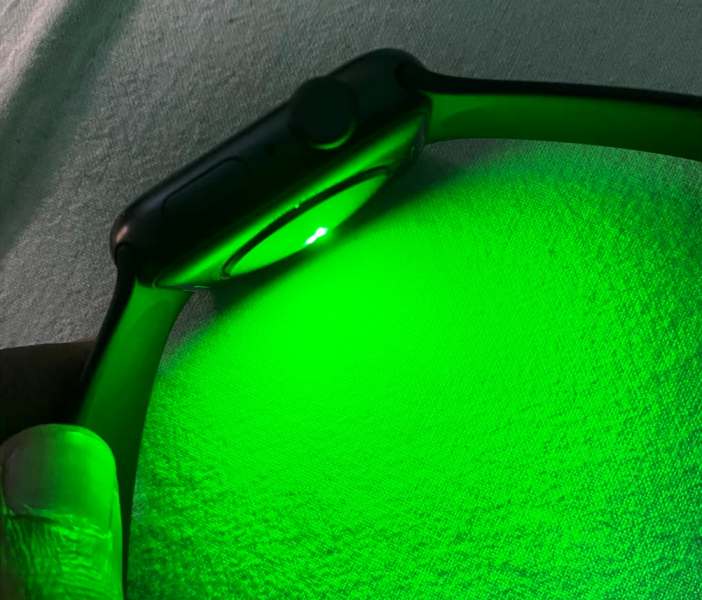Many people’s daily routines now include the Apple Watch and Apple’s entry into the wearable technology market. So let’s check out everything about the Apple Watch Green Light article. It has changed how we interact with technology, from fitness tracking to smart notifications. The mysterious “Apple Watch Green Light” on the back of the device is one especially intriguing feature. We’ll delve deeply into the world of the Apple Watch’s approval in this article, examining its applications, significance, and underlying technology.
The Apple Watch has a sleek design and a wide range of features, but it also has a pulsating Apple Watch Green Light that frequently makes its wearers curious. It might appear to be merely an aesthetic preference or a small design quirk at first. This glowing beacon, though, conceals a world of cutting-edge technology and complex functionality. We’ll delve into the mystery of this luminous feature in this investigation, revealing the game-changing technology that beats beneath the surface of Apple’s cult-classic wearable. Now let’s get to know more about this Apple Watch Green Light guide.
1. The Purpose Behind the Glow
The Apple Watch Green Light on the back of your Apple Watch might initially appear unnecessary or purely decorative. But these Apple Watch Green Light have a very important function.
- Heart Rate Monitoring: The primary use of the Apple Watch Green Light is to measure the wearer’s heart rate. Through a process called photoplethysmography, the Apple Watch can gauge blood flow and thereby calculate heartbeats per minute.
- Health Metrics: Alongside heart rate, Apple Watch Green Light sensors in tandem with infrared lights to gather data for various health metrics, like VO2 max or even sleep patterns.
2. Photoplethysmography: The Science Behind the Glow
It’s critical to comprehend the meaning of the term “photoplethysmography” to fully appreciate the significance of the Apple Watch Green Light. Sounds challenging, doesn’t it? Let’s deconstruct it:
- The Basics: Photoplethysmography (PPG) is a simple optical technique used to detect volumetric changes in blood in peripheral circulation. It’s commonly used in medical devices to measure heart rate, blood oxygen levels, and other vital parameters.
- How it Works: When the green LEDs on your Apple Watch illuminate your skin, they penetrate the outer layers. Blood, being red, reflects the Apple Watch Green Light differently than the surrounding tissue. As your heart beats and blood flows through your wrist, there are variations in the amount of Apple Watch Green Light reflected. By measuring these variations, the Apple Watch can calculate your heart rate.
3. Green Light vs. Infrared: The Dual System
The Apple Watch Green Light is necessary for the Apple Watch to function, but it is not sufficient in and of itself. Additionally, the watch uses infrared light in certain circumstances:
- Resting Measurements: When you’re not working out and your arm is down, the Apple Watch will switch to infrared light to measure your heart rate, conserving battery in the process.
- Workout Mode: When in workout mode, or if the watch isn’t getting good readings with infrared, the Apple Watch will switch to the green LEDs.
4. Tips for Best Readings
Your Apple Watch’s ability to provide accurate readings depends on several variables. Here are a few advice:
- Tighten the Strap: A loose strap can lead to erratic readings. Ensure your watch is snug but comfortable.
- Keep it Clean: Dirt or sweat can affect readings. Regularly clean the back of your Apple Watch.
- Proper Placement: Ideally, your Apple Watch should sit just above the prominent bone on your wrist.
5. Some Fun Facts About Apple Watch Green Light
- Apple’s green LEDs are some of the most powerful LEDs used in consumer wearables.
- The Apple Watch can technically measure your heart rate on other parts of your body – not just your wrist! Enthusiasts have tried and tested locations like the forehead and the top of the foot.
- The Apple Watch’s Heart Rate app archives all your heart rate data, giving a fascinating insight into your fitness and stress levels over time.
6. Exploring Beyond the Basics
While most people are familiar with the basic functions of the Apple Watch Green Light, Apple is constantly pushing the limits of the Watch’s health monitoring capabilities.
- Sleep Tracking: The importance of sleep can’t be overstated, and the Apple Watch Green Light plays a part in Apple’s Sleep app. By continuously monitoring your heart rate throughout the night, the Watch provides insights into your sleep patterns, helping you understand the quality and length of your rest.
- Breathing Reminder: The Breathe app utilizes the Apple Watch Green Light to gauge your heart rate and guide you in taking moments to perform short, calming breathing exercises, ensuring optimal relaxation.
- ECG and Afib Detection: In more recent models, Apple incorporated electrical heart sensors. While this doesn’t directly involve the Apple Watch Green Light, the Watch still checks for your heart rate during ECG tests and monitors for signs of atrial fibrillation.
7. The Environmental Consideration
Have you ever questioned why Apple chose Apple Watch Green Light over other options? There is science supporting that choice:
- Optimal Penetration: The colour green has a wavelength that penetrates the skin efficiently, allowing for more accurate readings.
- Power Consumption: Green LEDs tend to consume less power compared to other colours, helping to conserve battery life.
- Less Interference: Apple Watch Green Light is less prone to interference from ambient lighting, ensuring consistent and accurate readings.
8. Challenges and Considerations
Although the Apple Watch Green Light sensor system on the Apple Watch is impressive, it’s important to understand its limitations:
- Tattoos and Skin Types: Dark tattoos, especially those with red or green ink, can interfere with the sensor’s ability to read heart rates. Similarly, variations in skin tones and thickness can sometimes impact readings.
- External Factors: Cold environments can cause reduced blood flow to the wrists, potentially affecting the sensor’s readings. It’s advised to keep this in mind when interpreting data during winter workouts.
- Data Privacy: With continuous monitoring comes the responsibility of handling data. Apple emphasizes data privacy, but users should remain aware of where and how their health data is stored and shared.
9. The Future of the Apple Watch Green Light
We can only anticipate Apple to further innovate the functions and applications of the Apple Watch Green Light as technology develops:
- Advanced Health Monitoring: The potential to detect other health conditions or even early signs of diseases.
- Integration with Other Devices: Think about a future where your Apple Watch’s health data seamlessly integrates with other health devices or even your doctor’s systems.
- Improved Accuracy: As with all technology, subsequent iterations will likely focus on refining accuracy and expanding the range of detectable health metrics.
Final Words
So this is all about the Apple Watch Green Light article guide. The positive signal from the Apple Watch serves as a shining illustration of how technology can be used for health and well-being. This tiny green glow is the perfect example of how form and function can coexist, both in its original form and in its current iteration, and undoubtedly into the future. We can be enthusiastic about the potential changes in personal care and health monitoring as wearables continue to permeate our daily lives. Hope you like this Apple Watch Green Light from here now.
Hope you enjoy checking this type of Apple Watch Green Light content. The Apple Watch Green Light on the Apple Watch is more than just a pretty design element. It demonstrates Apple’s dedication to seamlessly fusing functionality and aesthetics. The Apple Watch offers users an unmatched tracking system right on their wrists through the clever application of photoplethysmography and the fusion of green and infrared lights. So the next time a green glow catches your attention, you’ll be aware of the wonders of science and design that went into creating it. If you enjoy reading the Apple Watch Green Light then please do share the Apple Watch Green Light with others as well.
The mysterious Apple Watch Green Light is more than just a representation of the company’s design philosophy; it also serves as a symbol of technological innovation and the future of wearable technology. It has become abundantly clear as we have explored this luminescent feature’s intricate functionalities, from the depths of photoplethysmography to its function in holistic health monitoring, that it is a beautifully balanced combination of science and artistry. Therefore, keep in mind that you are wearing more than just a watch when that emerald glow graces your wrist: you are wearing a piece of tomorrow, today.
People Also Ask (FAQs):
- Why does my Apple Watch have a green light?
The Apple Watch Green Light on the back of your Apple Watch plays a pivotal role in monitoring heart rate. Using a technique called photoplethysmography, the watch gauges blood flow and calculates heartbeats per minute by observing how the Apple Watch Green Light is absorbed and reflected by your blood. - Can tattoos affect the Apple Watch Green Light functionality?
Yes, tattoos, particularly those with green or red ink, can interfere with the Apple Watch Green Light’s ability to measure heart rate effectively. The ink, depending on its density and colour, can alter the reflection and absorption patterns of the light. - Is the Apple Watch Green Light always on?
No, the Apple Watch smartly manages the Apple Watch Green Light function. When you’re stationary or your arm is down, the watch often switches to infrared light to conserve battery. It will revert to the green LEDs during workouts or if it can’t obtain a good reading with infrared. - How do I ensure the most accurate reading from the Apple Watch Green Light?
To get the most accurate reading, ensure that your Apple Watch strap is snug (but not too tight), the device is clean, and it’s positioned just above the wrist bone. - Does the Apple Watch Green Light have any other functions besides heart rate monitoring?
While heart rate monitoring is its primary function, the Apple Watch Green Light also plays a role in other health metrics, such as calculating VO2 max and analyzing sleep patterns. It works in tandem with other sensors to provide a comprehensive overview of your health.
- Is there any concern regarding privacy with the health data collected?
Apple emphasizes user data privacy, ensuring that health data remains encrypted and is never shared without user consent. Always be sure to check your settings and permissions to stay informed about where and how your data is being utilized. - What’s next for the Apple Watch Green Light technology?
The potential is vast! As wearable technology continues to evolve, there’s a possibility of detecting more health conditions, better integration with other devices, and refining the accuracy of the data collected. Apple’s commitment to innovation ensures that the future holds more surprises for its users.
This Apple Watch Green Light FAQ only scratches the surface of the numerous queries users have regarding the Apple Watch’s approval, demonstrating the amazing fusion of design, technology, and science that Apple continues to offer to its broad customer base.







